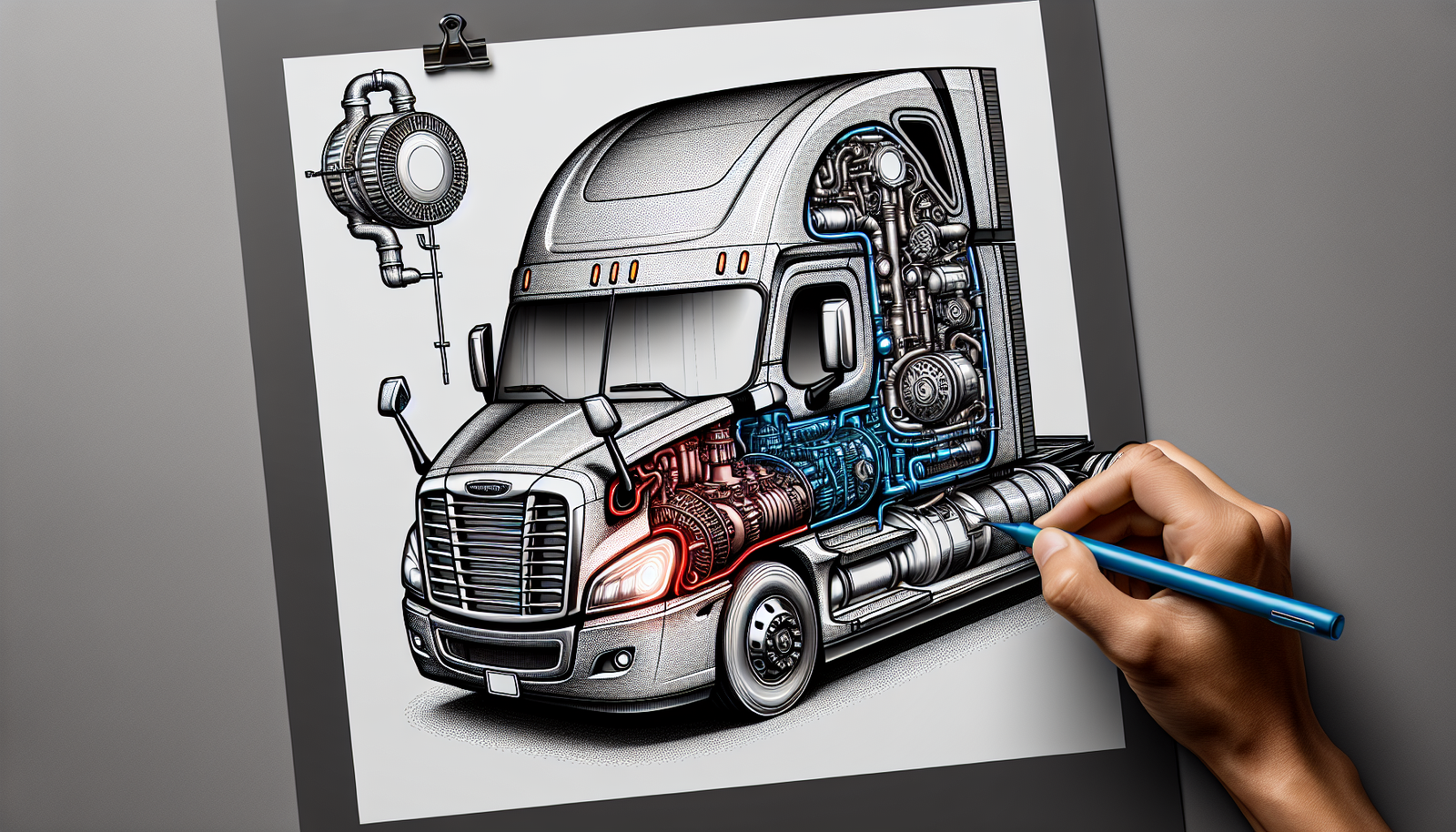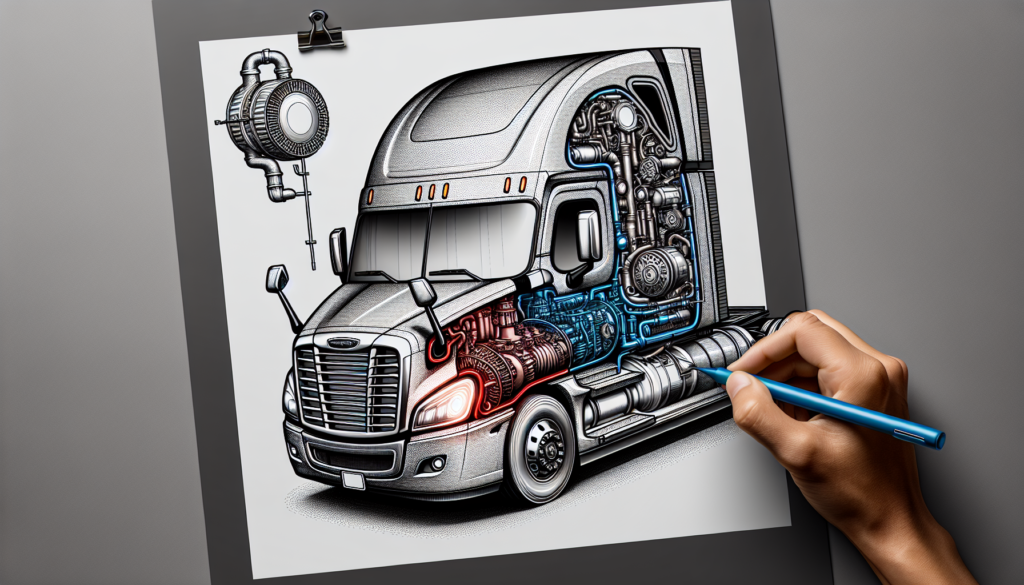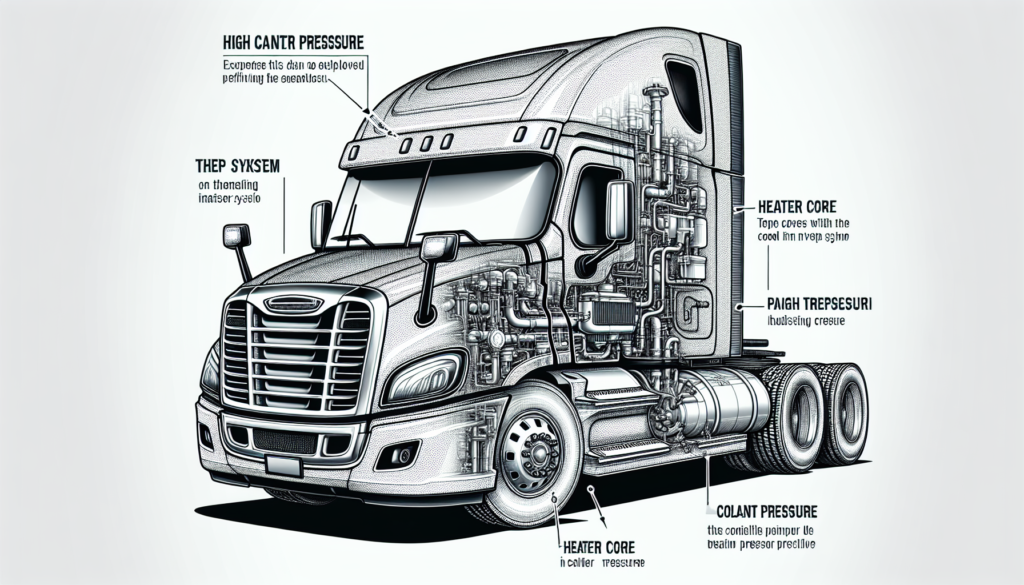
In the bustling world of big rigs and the roar of 18-wheelers, maintaining the heart of your Freightliner Cascadia is crucial for both comfort and performance. You’re likely familiar with the warmth of your cabin’s heater on those long, frosty hauls, but have you considered how the health of your coolant system could affect this vital comfort? Let’s explore the impact that high coolant pressure might have on your Freightliner’s heater, ensuring your journeys remain as cozy as they are efficient.

Understanding Coolant Systems
The coolant system is an integral part of your Freightliner Cascadia’s engine health and performance. This system maintains the temperature of your engine to prevent it from overheating, which can cause severe damage.
Role of Coolant in Freightliner Cascadia
In your Freightliner Cascadia, the coolant plays the dual role of pulling heat away from the engine components and maintaining optimal operating temperature. Without proper coolant circulation, your engine could overheat, leading to engine failure.
Components of the Coolant System
Your Cascadia’s coolant system comprises several key components: the radiator, water pump, thermostat, heater core, coolant hoses, and the overflow tank. Each piece works together to transport and regulate the flow of coolant.
Normal Operating Coolant Pressure Ranges
The normal operating pressure for most coolant systems, including your Cascadia, typically ranges from 10 to 15 psi. This pressure is essential for the efficiency of the coolant system and ensures that boiling points are raised to prevent overheating.
The Science of Coolant Pressure
Understanding how coolant pressure works is crucial for maintaining your Cascadia’s health.
How Coolant Pressure is Generated
Coolant pressure is generated when the water pump forces coolant through the closed system. As the coolant absorbs engine heat, it expands, which increases pressure within the system.
Factors Influencing Coolant Pressure
Various factors influence coolant pressure, including coolant volume, temperature, and the condition of coolant system components. Any change in these can affect the operating pressure.
Signs of High Coolant Pressure
Signs that your Cascadia might be experiencing high coolant pressure include hoses that are hard to the touch, coolant leaks, and frequent coolant reservoir overflow.
Heater System Basics
You’ll want to stay warm during those long hauls, so let’s talk about your cab’s heater.
Components of the Freightliner Cascadia Heater System
The heater system in your Cascadia includes the heater core, blower motor, heater hoses, and control valves, all crucial for delivering warm air into your cabin.
How the Heater System Works
The heater system works by directing hot coolant through the heater core, which then transfers heat to the air blown by the blower motor into your cabin.
The Relationship Between Heater and Coolant System
Your heater system relies on the coolant’s heat to function correctly. If there’s an issue with your coolant system, it could directly impact your heater’s effectiveness.
High Coolant Pressure and Heater Malfunction
High coolant pressure can be particularly troublesome for your heater system.
Impact of High Coolant Pressure on Heater Core
High coolant pressure can lead to leaks or damage in the heater core, which can cease to function properly.
Symptoms of Heater Problems Due to High Coolant Pressure
If your heater is blowing cold air, not working at all, or you notice a sweet-smelling vapor, you might have heater problems related to high coolant pressure.
Diagnosing Heater Problems Related to Coolant Pressure
To diagnose heater problems caused by coolant pressure, check for leaks, test for blockages in the heater core, and inspect the condition of the heater hoses.

Causes of High Coolant Pressure
Several issues could lead to high coolant pressure.
Coolant Overfill and Expansion
Overfilling your coolant can cause excessive pressure once the coolant expands with heat. Always adhere to the proper fill levels.
Faulty Radiator Cap and Relief System
A faulty radiator cap or a clogged pressure relief system can also result in abnormally high coolant pressure by not releasing excess pressure.
Engine Overheating and Its Effects
Overheating engines can lead to increased coolant pressure that exceeds normal levels, risking damage to coolant system components.
Head Gasket Failure Impacting Coolant Pressure
A failed head gasket can allow combustion gases to enter the coolant system, dramatically increasing pressure and causing overheating.
Preventing High Pressure Issues
Effective measures can help prevent issues related to high coolant pressure.
Regular Coolant System Maintenance
Regular maintenance, including coolant changes and flushing the coolant system, is key to preventing pressure problems.
Proper Coolant Levels and Quality
Ensuring the right coolant levels and using the correct type of coolant for your Cascadia are critical for system health.
Radiator Cap Inspection and Replacement
Regularly inspect the radiator cap and replace it if it shows signs of wear or does not maintain the correct pressure.

Troubleshooting the Heater Problems
Understanding how to identify and troubleshoot heater problems is important for maintaining comfort in your vehicle.
Identifying Heater Core Issues
Keep an eye open for a sweet smell, a foggy windshield, or wet carpet near the dashboard, all of which could indicate heater core issues.
Steps to Diagnose Heater Inefficiency
Steps for diagnosing heater problems include checking for adequate coolant levels, ensuring proper thermostat operation, and verifying that the heater control valve is functioning correctly.
Tools Required for Heater System Diagnostics
Tools needed for diagnostics might include a multimeter, pressure tester, and a system scan tool to check for electronic issues in automatic temperature control systems.
Repair and Replacement Solutions
Repair and replacement options are available for addressing high coolant pressure and heater issues.
Fixing the High Coolant Pressure
Addressing high coolant pressure may involve replacing faulty components like the radiator cap or thermostat, or repairing any leaks in the coolant system.
Heater Core Repair or Replacement
If the heater core is damaged, it might be necessary to repair or replace it to ensure efficient heating.
Long-term Solutions for Heater Reliability
Long-term solutions include routine inspections, system flushes, and ensuring that any repairs are performed with high-quality parts and practices.

Professional Intervention
Sometimes, the best course of action is to consult an expert.
When to Consult a Professional Mechanic
If troubleshooting and minor repairs don’t resolve heater issues or high coolant pressure, it’s best to consult a professional mechanic.
The Role of Technicians in System Evaluation
Technicians can perform a full system evaluation, checking for issues that may not be apparent to the untrained eye.
Cost-Benefit Analysis of Professional Repair Services
While professional services incur costs, they can provide long-term benefits by preventing more severe issues that may require even costlier repairs.
Future Technology and Developments
Looking ahead, advancements are being made in freight hauling, specifically in coolant systems.
Advancements in Coolant System Design
Future coolant systems may feature more efficient designs for temperature regulation, reducing the chances of high pressure and heater problems.
Predictive Maintenance Tools
Predictive maintenance tools that monitor system health and alert you to issues before they become serious could become standard features in vehicles like the Freightliner Cascadia.
Integration of Smart Sensors in Freightliner Cascadia
The integration of smart sensors into Freightliner Cascadias may provide real-time data, making it easier to maintain optimal coolant system pressure and prevent heater issues.
